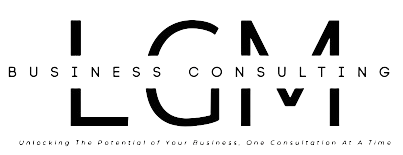In today’s dynamic business environment, effective organizational design is crucial for driving efficiency, fostering collaboration, and achieving strategic goals. A well-designed organizational structure not only clarifies roles and responsibilities but also enhances communication and facilitates growth. Here’s a guide to creating an organizational structure that works for your business.
1. Understand Your Business Goals
Before diving into organizational design, it’s essential to have a clear understanding of your business goals and strategy. Are you focusing on innovation, customer service, efficiency, or growth? Your organizational structure should align with these goals to ensure that every part of your organization supports your overall strategy.
2. Identify Key Functions and Roles
Once you have a grasp on your goals, identify the key functions and roles required to achieve them. This includes understanding the core activities that drive your business and the roles needed to perform these activities effectively. For instance, if customer service is a top priority, you might need a dedicated team focused on customer support and satisfaction.
3. Choose an Appropriate Structure
There are several organizational structures to choose from, each with its benefits and drawbacks. Here are a few common types:
- Hierarchical Structure: This traditional model features a clear chain of command with a top-down approach. It works well in larger organizations where a clear hierarchy is necessary for managing complex operations.
- Flat Structure: This model minimizes levels of management, promoting a more collaborative environment. It is suitable for smaller companies or those seeking to foster a more flexible and agile culture.
- Matrix Structure: Combining functional and divisional structures, the matrix model allows for more flexibility and better collaboration across departments. However, it can lead to confusion about reporting lines and decision-making authority.
- Divisional Structure: Organizes teams based on products, services, or geographical locations. It helps in focusing on specific market segments but can lead to duplication of resources and efforts.
4. Define Reporting Relationships
Clarify who reports to whom and how information flows within the organization. Well-defined reporting relationships prevent confusion and ensure that everyone understands their responsibilities and whom they should turn to for guidance. This clarity is crucial for maintaining efficiency and accountability.
5. Foster Communication and Collaboration
An effective organizational design promotes open communication and collaboration. Ensure that your structure supports cross-functional teams and provides channels for feedback and idea-sharing. Regular meetings and collaborative tools can help bridge gaps between departments and enhance overall teamwork.
6. Consider Scalability and Flexibility
As your business grows, your organizational structure should be able to adapt. Design a structure that allows for scalability without major disruptions. Flexibility is key in responding to changes in the market, technology, or business strategy.
7. Implement and Evaluate
Once you’ve designed your organizational structure, implement it with a clear plan and timeline. Communicate the changes to your team and provide training if necessary. After implementation, regularly evaluate the effectiveness of the structure. Solicit feedback from employees and monitor performance to make adjustments as needed.
8. Focus on Culture
The structure of your organization should support and enhance your company culture. Ensure that the design aligns with your values and fosters a positive work environment. A structure that promotes trust, respect, and collaboration will contribute to a more engaged and motivated workforce.
Conclusion
Creating an effective organizational design is a critical component of business success. By understanding your goals, choosing the right structure, defining roles, and promoting communication, you can build a framework that supports growth and efficiency. Regular evaluation and a focus on culture will help you adapt to changes and ensure that your structure continues to work for your business.
Remember, organizational design is not a one-time task but an ongoing process that evolves with your business. Stay proactive and responsive to ensure that your structure remains effective and aligned with your goals.

